► Octavia Estate facelift driven
► Biggest boot the best choice?
► Comfortable and cunningly designed
The Skoda Octavia Estate is surely in with a shout of being the most pragmatic car you can buy in the UK right now. It’s right-sized for most situations (including parking spaces), boasts the additional practicality of that extra load space, and remains excellent value for money at a time when household budgets are still getting tighter.
This review covers the latest facelifted Octavia Estate, which I’ve been sent to drive in no small part because I’ve spent the previous six months running around in a pre-facelift model, which I specced carefully as family transport for a pair of under-six-year-olds. (You can read more about this in the Octavia Estate long-term test reports on Parkers.co.uk). I’m very familiar with this car’s strengths and weaknesses.
The revised version is far from dramatically different, but Skoda has reacted to some feedback. It’s also added a whacking-great 13.0-inch infotainment screen, and moved to replace some of the interior materials with more sustainable alternatives. If you were going to buy one anyway, there’s no reason this update should change your decision; if you were on the fence, well, keep reading and I’ll try and help you make up your mind.
At a glance
Pros: It’s got the biggest boot in its class, well-equipped, great value, comfortable
Cons: Not thrilling, don’t assume your stuff will fit without actually checking
What’s new?
New lights and bumpers front and rear are the general exterior updates, though the return of the Sportline trim level means you can now get a cooking model on 15mm lower suspension and fitted with variable ratio steering as standard. There will also be an updated vRS with 261bhp, but that doesn’t arrive until later in 2024.

On the inside there’s no missing that larger central screen – it’s so big you might loose a little of it behind the steering wheel, depending on your driving position. How obvious the new sustainable features are depends on the trim level, more basic models get a spackled strip across the dashboard that’s clearly a nod to its recycled origins.I don’t mind this, you may be mortally offended; some on the launch event thought it cheapened the look of an otherwise high-quality cabin experience.
The seat upholstery is a little jazzier in general, with some intricate stitching options and a renewed choice of ambience via a number of coordinated new Skoda Design Selection finishes. Mood lighting always prevented the pre-facelift Octavia being too much of a blackhole, but this is a more concerted effort – though beware the lighter upholstery if you do have younger kids…
What are the specs?
Under the bonnet the Octavia Estate’s engine range has been reduced to two 1.5-litre TSI petrols and two 2.0-litre TDI diesels (plus the vRS and rumours of a resurrected plug-in hybrid at some point in the future). Regardless of fuel you get a choice of 114bhp or 148bhp, though the seven-speed DSG automatic petrol variants also gain mild hybrid systems and e-Tec badging, which makes them subtly but usefully better than the regular six-speed manual models.
So while most Octavia buyers are expected to opt for the basic 114bhp turbo petrol manual, I’d endorse the latest version of the 148bhp turbo petrol DSG – the same engine and transmission combo as my recent long-termer. The combination of extra horses, an extra gear ratio, sensible automatic transmission programming and mild-hybrid assistance makes for a much more convincing family all-rounder, especially if you plan to make the most of the boot.
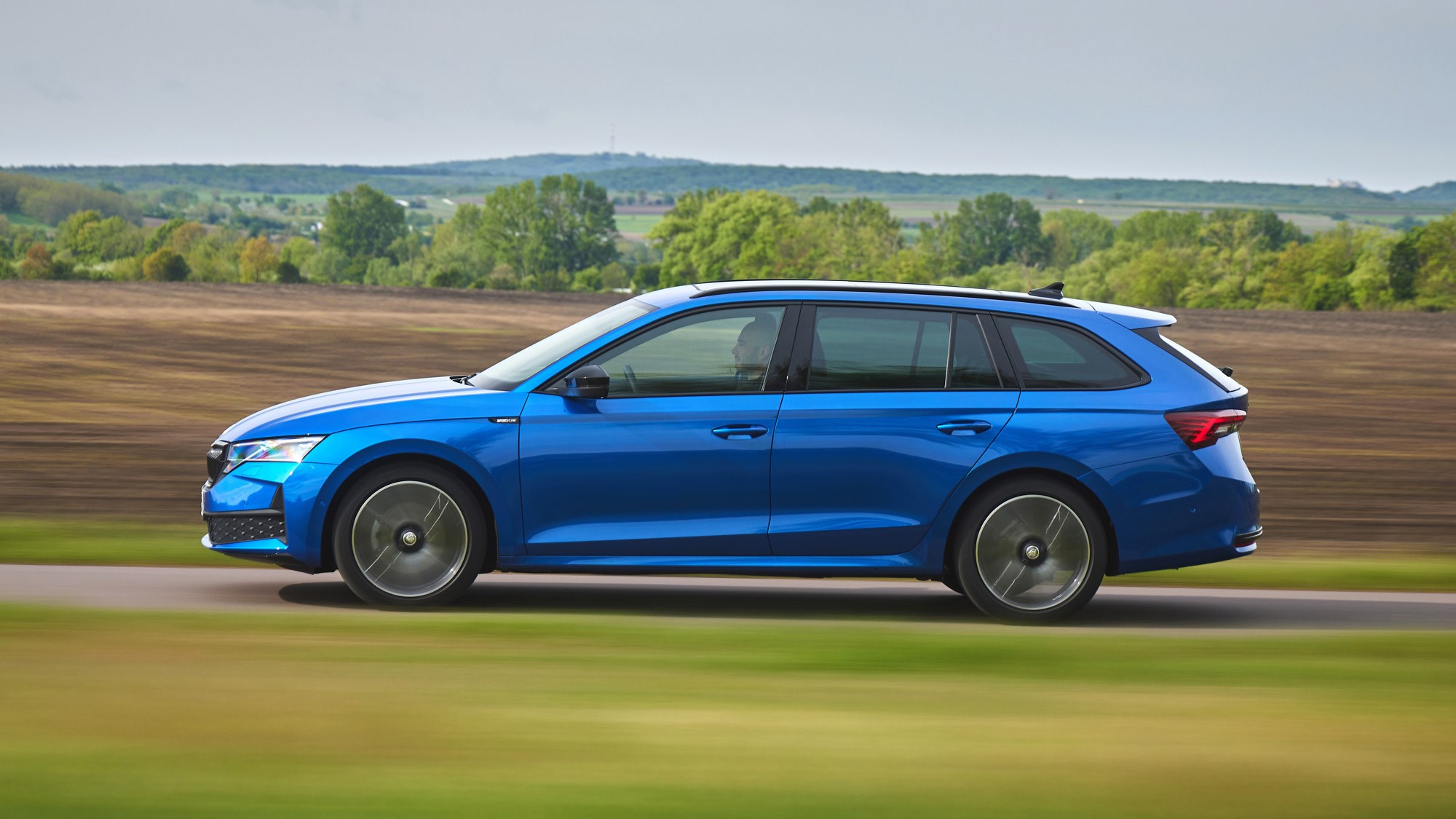
Raw evidence for this comes from the 0-62mph time, which drops from 10.4sec to 8.6. But as well as slicker stopping and starting the mild-hybrid delivers enough of a torque boost at low rpm to make the DSG car feel usefully keener than even the 148bhp manual – which has the same official acceleration stats. With DSG, you’ll get an easy 40mpg in the real world, more if you mostly use the motorway.
Diesel is set to take only 10 per cent of UK Octavia sales, which seems a shame for the 148bhp 2.0-litre. This gets DSG as standard and proves to be a smooth, muscular experience – torque shooting up to 265lb ft compared with 184lb ft from the equivalent petrol making it feel both more relaxed and more potent, despite an identical 0-62mph in 8.6sec. Long-distance fuel economy will be more like 50mpg, although avoid if you do mostly short journeys.
The 114bhp diesel I’d leave at the dealership – available as a six-speed manual only, it feels a touch flat. You’ll be changing gear a lot unless you’re never in a hurry.
What’s it like to drive?
Neat and tidy, with a brief biased heavily towards comfort rather than thrills. While probably as it should be for a family car, that kind of thinking could still spell disaster without a nuanced approached, and fortunately Skoda hasn’t simply softened everything off and hoped for the best.
Body control is actually pretty good – the Octavia Estate absorbs bumpy tarmac but doesn’t let go of itself in the process. Same in the corners: the car leans, but in a properly linear fashion, rather than suddenly lurching beyond the chassis’ restraint. As such, it’s easy enough to drive quickly but better suited to blasting down a-roads than beating cross-country records.
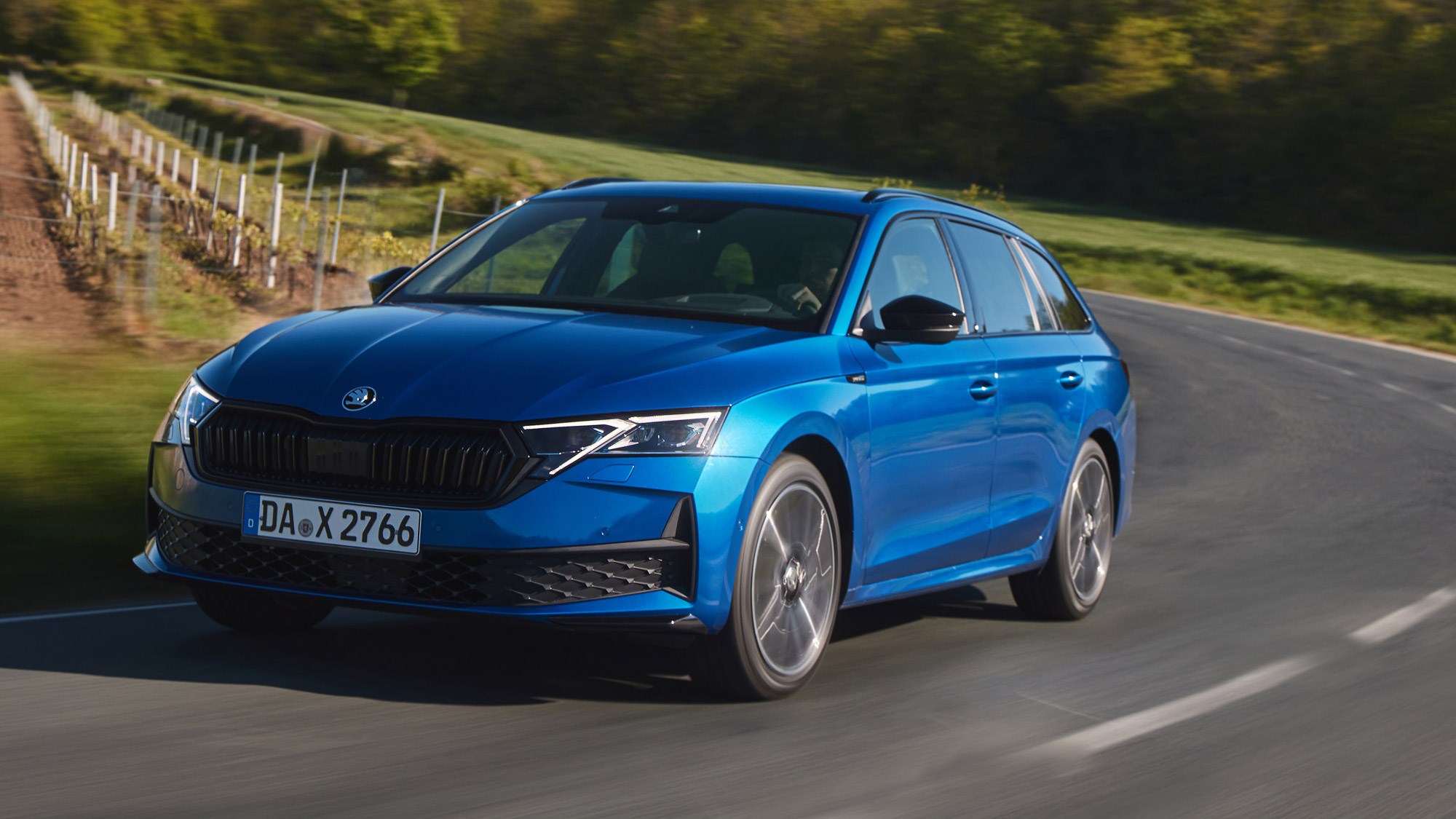
I had 17-inch alloys (and all-season tyres) on my long-termer, yet it seems I could have opted for 18s without suffering too much – every car on the launch was fitted with these and still dealt with the Czech Republic’s remarkably British-like (ie: broken) surfaces very judiciously. Even the Sportline variants, which are a little firmer and sharper.
Variable damping is available, but the fixed-rate standard damping does a solid job, so save your money. The steering has a light touch rather than lots of feel, and there’s a bit of a dead spot straight ahead; the only chassis change for the facelift I could get the on-hand Skoda engineer to acknowledge is a tiny reduction in power assistance – prompted by customer feedback, apparently. Though coincidentally Skoda did have to re-do the steering and ESC software due to the new EU cybersecurity rules.
Fundamentally, if you want thrilling in this sector, seek out a Ford Focus Estate – or look for a deal on a 3-series Touring. Competence and assuredness, however, the Octavia has plenty of.
What about the interior?
The infotainment screen comes with improved software, which seems a touch faster – and is hopefully less buggy (time will tell on that one). The bigger screen means larger virtual buttons in places, which is also good news. The physical short-cuts remain a godsend, though, as does the button on the steering wheel that takes you straight to the active safety settings, viewed in the standard-fit 10.0-inch digital instrument cluster. Goodbye lane keeping and that speed limit warning chime…
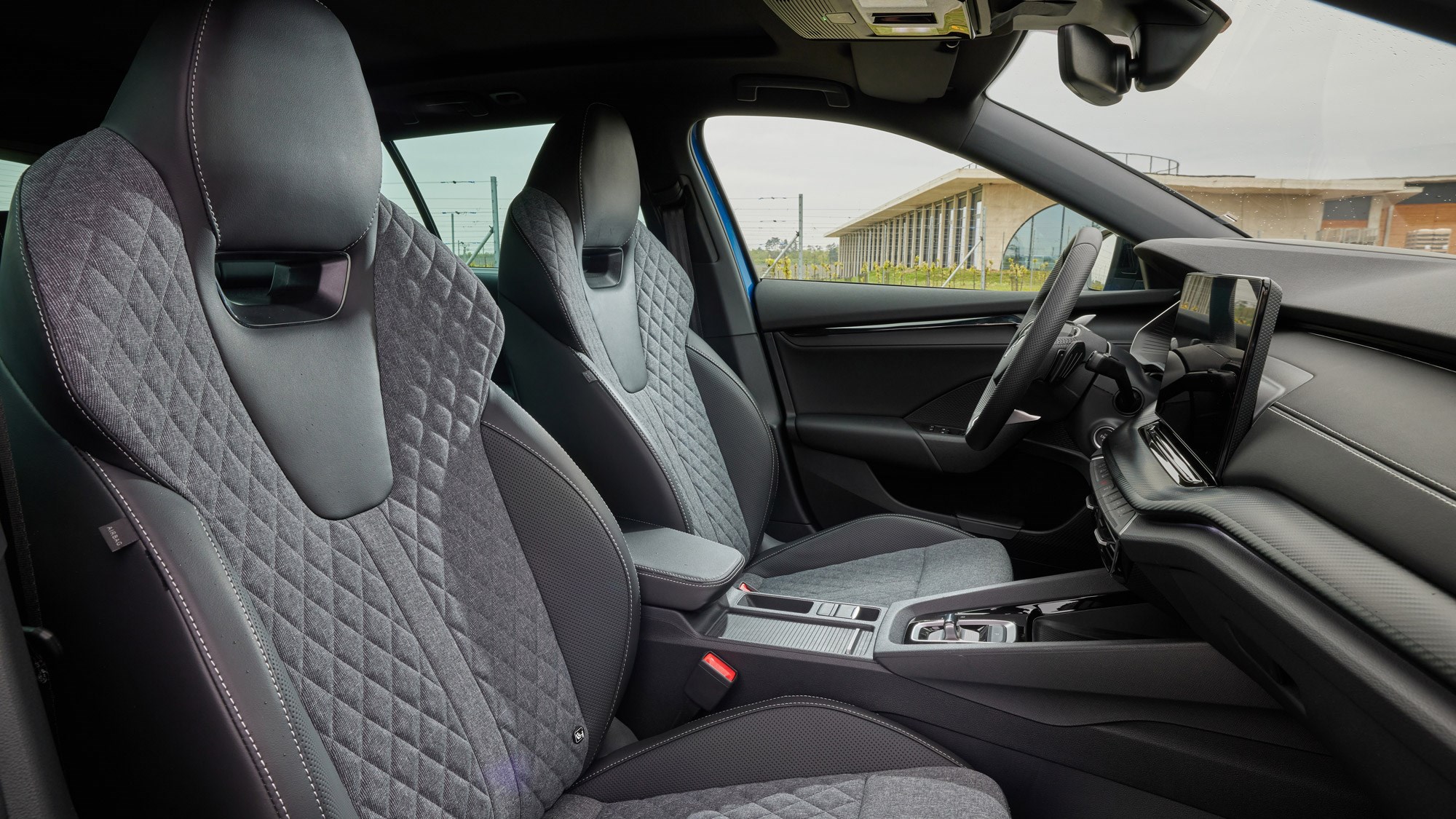
Passenger space is generous front and rear, though middle rear passengers don’t get as good a deal as in some similarly sized SUVs which offer three individual seats, and quality is solid throughout. The bright chromework has been replaced by a darker chrome, which is less reflective, and the umbrella in the door now has a cover made from sustainable material. The ice scraper under the fuel filler flap is also now more eco-friendly.
All of this is leading up to the boot. At 640 litres, this is 40 litres bigger than the Octavia hatchback (enormous) and basically out-does every other similarly sized estate. As well as some wagons from the class above.
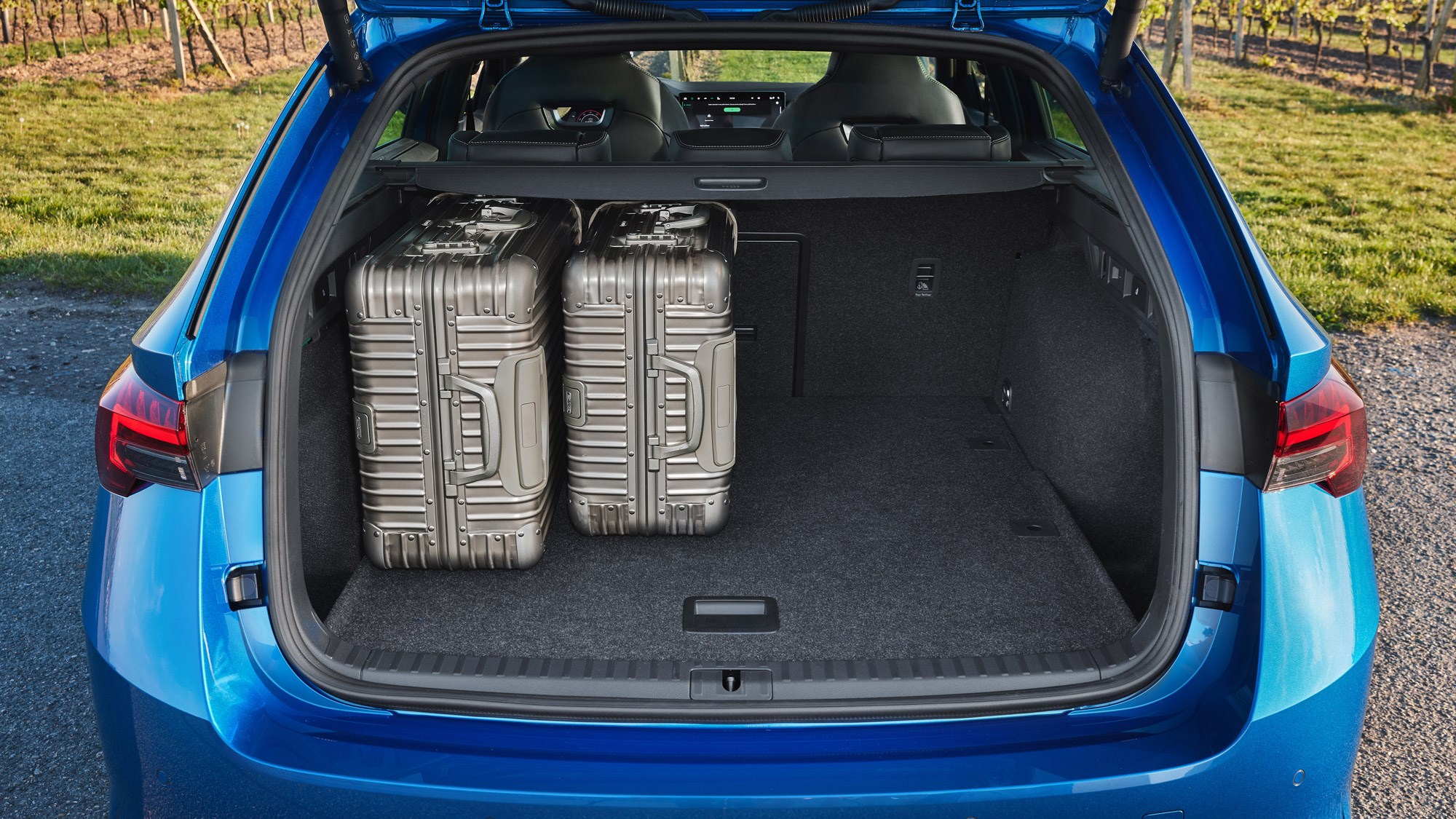
However, if you’re a family with young children and all the gubbins that comes along with, try and take that gubbins along to the showroom. My 18-month-old’s pushchair only just fits between the cutouts behind the wheelarches and once you’re also adding a travel cot you may soon find there isn’t as much room as the figures suggest – it’s something to do with the relatively narrow width, the false floor and the angled rear window.
That false floor is good for storing common-carry but rarely needed items and you can stash the load cover under there. But it doesn’t mean you get a totally flat load bay when the rear seats are folded. This releases 1700 litres of space in total, though, and Skoda has a good selection of genuinely useful luggage-restraining optional extras.
Before you buy (trims and rivals)
Mirroring the hatchback, the facelift Octavia Estate comes in three trim levels: SE Technology, SE L and Sportline. All have plenty of equipment, including most of the modern safety items that are actually helpful – LED headlights, eight airbags (with two more on the options list), an expanded repertoire of autonomous braking – and some niceties such as more powerful wireless charging, with cooling.
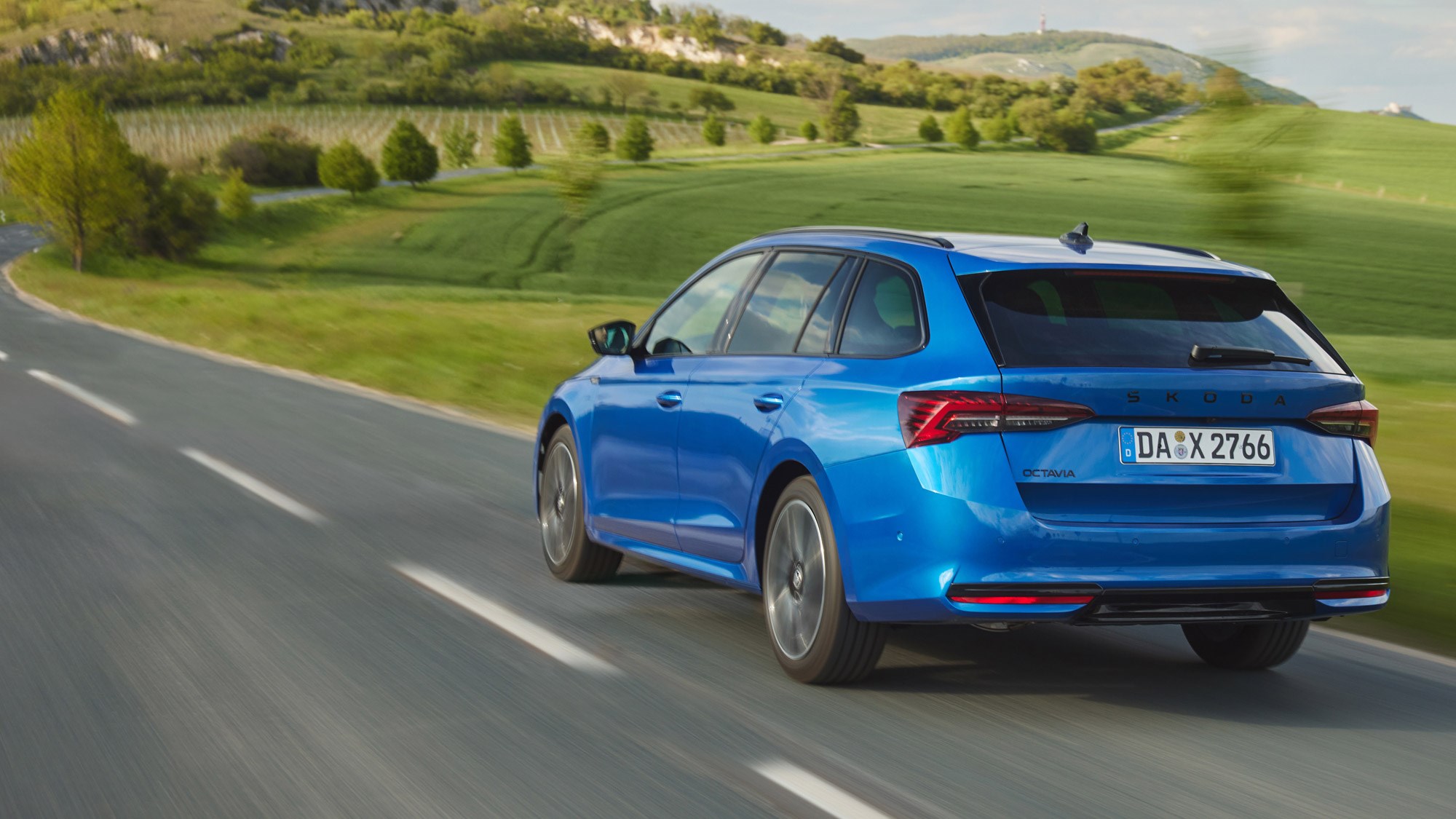
Rivals include the Golf Estate and Seat Leon Estate (both closely related to the Skoda, but smaller), the Ford Focus (discontinued soon), the Vauxhall Astra Sports Tourer, the Peugeot 308 SW, the Toyota Corolla Touring Sports and the Kia Ceed SW. All of these have their strengths – the Corolla’s hybrid system is pretty outstanding, for instance, the Ceed has a seven-year warranty – but none can match the Octavia for value. Or outright boot space.
Verdict
You need to check that boot will take your stuff – don’t just assume it. But in terms of no-nonsense fitness for purpose, the Octavia Estate is tough to beat. The driving experience isn’t thrilling but it is highly polished, and sensible control decisions throughout make these cars easy to live with. Go for a 148bhp engine and ignore the purists: the DSG is the better bet.
Specs below are for the 148bhp Skoda Octavia Estate 1.5 TSI e-Tec DSG